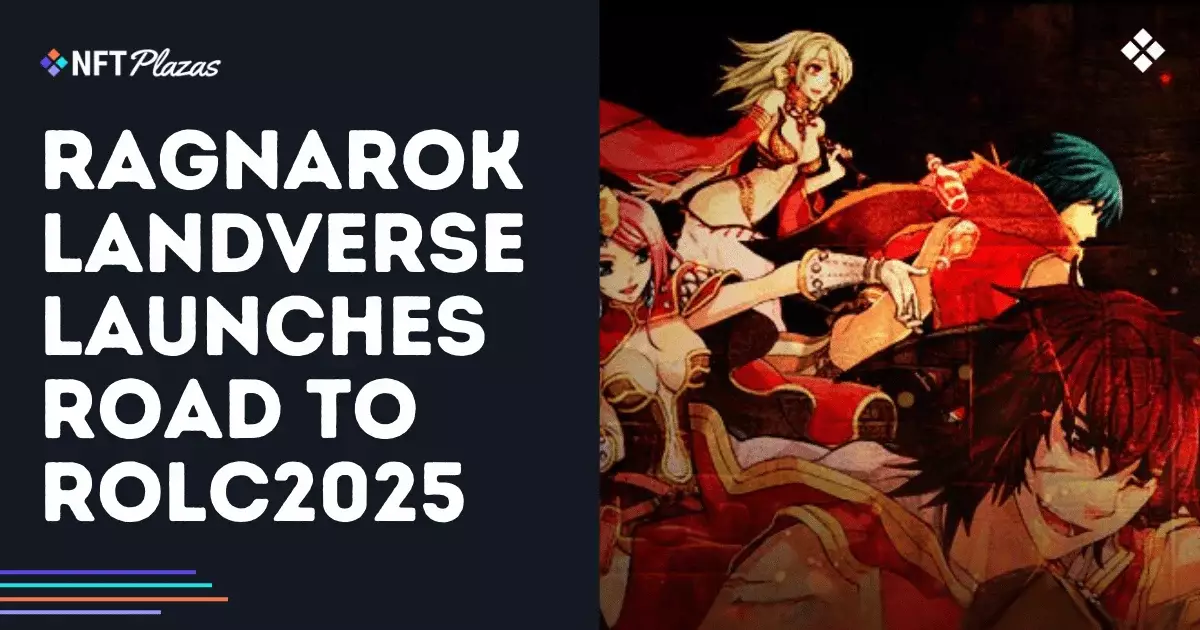The gaming landscape has evolved exponentially over the past decade, with one of the most noteworthy shifts being the surge of competitive gaming, particularly within the realm of non-fungible tokens (NFTs). Recently, Ragnarok Landverse: Genesis has made headlines by unveiling a competitive framework intended for its pivotal event, the Ragnarok Landverse Championship 2025 (ROLC2025). This initiative has the potential to redefine community engagement within the gaming ecosystem, but it’s essential to examine its implications and the competitive dynamics at play.
A League-Based Approach: The Battle for Strategy
Gone are the days when players could simply log in solo and hope for the best. The new “Road to ROLC2025” eschews individual performance in favor of guild-based strategies. This is intriguing, as it not only promotes teamwork but also reinforces the need for players to unite under a common goal. The emphasis on guilds as the primary unit of competition may alienate solo players, but it undeniably enhances camaraderie. Guild-based tournaments can foster a deeper sense of belonging, which the gaming community craves. However, it also raises questions about accessibility; what happens to talented players who prefer to operate alone? Will they be left in the dust of organized chaos?
The two-season league format includes weekly battles for territorial control, engaging participants and promoting continuous interaction. Points are awarded based on performance during these “War of Emperium” (WoE) battles, making every match pivotal for guild progression. It’s a high-stakes game that requires strategy, foresight, and a savvy understanding of when to defend versus when to attack—a dynamic that could lead to unforeseeable rivalries and alliances.
Prize Pools: Money Talks in Competitive Gaming
The promise of a $30,000 prize pool during the first season may serve as an attractive lure for guilds, but it also raises an essential issue: does the competitive nature of gaming primarily revolve around financial incentives? While games have always incentivized skill through rewards, when monetary aspects become the focal point, it risks overshadowing the fundamental joy of gaming. There’s a delicate balance needed between fostering genuine competition and creating an environment where only those seeking financial gain thrive. Moreover, with subsequent seasons still awaiting details on reward structures, speculation will inevitably grow among guilds on whether they can sustain interest in the long run.
The distribution of the prize money has its own implications for competitiveness. With a significant portion designated for the top-ranking guilds, it may inadvertently encourage cutthroat tactics. Will allies become adversaries in pursuit of the top spot, and will guild dynamics shift as a result of competition? It’s worth pondering how such structures could tempt lesser-performing guilds to abandon their original values in lieu of financial success.
Accessibility vs. Elitism in Competitive Play
One of the primary sticking points concerning this new framework is the exclusion of solo players from competition. While this fosters deeply connected teams, it also creates a barrier to entry for individual talent. What happens when the most skilled players are sidelined due to their preference for solo gameplay? The guild-centric approach may risk homogenizing player experiences, limiting creativity, and discouraging innovation. Instead of allowing players to rise on individual merit, it seems to draw a line between ‘the elite’ and the rest.
Furthermore, for new players looking to break into the competitive scene, the pathway appears daunting. Joining or forming a guild requires time and social investment, which can be overwhelming to newcomers who are still learning the game. The learning curve for new players might create a sense of elitism, where only experienced individuals get to partake in the glory of ROLC2025.
The Future of NFT Gaming Competitiveness
As the Ragnarok Landverse: Genesis gears up for its upcoming competitive structure, the real question remains: Will it galvanize the gaming community, or merely create more divisions? The “Road to ROLC2025” has the potential to redefine how players engage with one another, promoting strategy and teamwork in unprecedented ways. However, it’s imperative for developers to tread carefully and ensure that this competitive spirit doesn’t come at the cost of individuality and accessibility. The balance they strike may determine not just the success of ROLC2025, but also the overall health of the gaming ecosystem moving forward. It’s a complex game of chess—one that we should watch closely.

